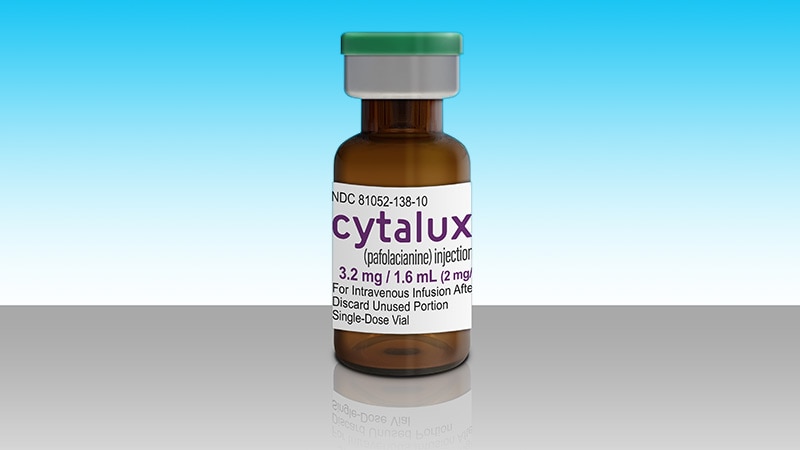Imaging Agent Pafolacianine in Lung Cancer Surgery Approval Data
Core Concepts
Imaging agent pafolacianine significantly aids in identifying cancerous tissue during lung cancer surgery.
Abstract
The data showcases the utility of the imaging agent pafolacianine (Cytalux) in lung cancer surgery, leading to clinically significant changes in over half of surgeries. The agent binds to folate receptors in pulmonary malignancies, causing them to fluoresce under near-infrared light, aiding surgeons in more thorough resections. The approval was based on the ELUCIDATE trial, showing promising results in detecting primary tumors, occult lesions, and surgical margins. Adverse events were generally mild, with nausea being the most common. Further research is needed to confirm improvements in disease-free survival and the agent's potential in early-stage lung cancers.
Data Showcase Imaging Agent Utility in Lung Cancer Surgery
Stats
Pafolacianine illuminated one or more clinically significant events in 53 surgical patients (53%).
The estimated sensitivity for detecting cancerous tissue was 76.9%; the false positive rate was 25.9%.
Most common adverse events were nausea (13%), vomiting (5%), and abdominal pain (2%).
Quotes
"Our research confirmed that Cytalux helps surgeons more easily visualize lesions and detect additional cancer at one of the most critical moments — during their operation." - Inderpal Sarkaria, MD
Key Insights Distilled From
by M. Alexander... at www.medscape.com 05-02-2023
https://www.medscape.com/viewarticle/991469
Deeper Inquiries
How might the use of pafolacianine impact the future of lung cancer surgery?
The use of pafolacianine in lung cancer surgery has the potential to significantly impact the future of the field. By binding to folate receptors expressed by pulmonary malignancies and causing them to fluoresce under near infrared light, pafolacianine enables surgeons to more easily visualize lesions, detect additional cancerous tissue, and ensure thorough resections. This can lead to improved surgical outcomes, such as locating primary tumors, identifying occult lesions missed on preoperative CT scans, and ensuring adequate surgical margins. The ability to accurately identify and remove cancerous tissue during surgery can potentially result in better disease management, reduced recurrence rates, and improved overall survival for patients undergoing lung cancer surgery.
What potential drawbacks or limitations could arise from relying on imaging agents like pafolacianine?
While imaging agents like pafolacianine offer valuable benefits in aiding surgeons during lung cancer surgery, there are potential drawbacks and limitations to consider. One limitation is the need for further investigation to establish the impact of pafolacianine on disease-free survival. Additionally, the administration of pafolacianine via intravenous injection may be cumbersome, requiring early preoperative administration and potentially adding complexity to the surgical process. The equipment needed for near infrared illumination may also be bulky, which could pose logistical challenges in the operating room. Furthermore, there may be concerns regarding the false positive rate and potential adverse events associated with the use of pafolacianine, such as nausea, vomiting, and allergic reactions. These drawbacks and limitations highlight the importance of ongoing research and development to optimize the use of imaging agents in lung cancer surgery.
How can advancements in imaging technology influence the overall approach to cancer treatment?
Advancements in imaging technology have the potential to revolutionize the overall approach to cancer treatment by enhancing the precision, effectiveness, and outcomes of various treatment modalities. In the context of cancer surgery, imaging agents like pafolacianine can improve the visualization of tumors, aid in the identification of cancerous tissue, and help surgeons achieve more thorough resections. This can lead to better surgical outcomes, reduced recurrence rates, and improved patient survival. Additionally, advanced imaging techniques, such as molecular imaging and functional imaging, can provide valuable insights into tumor biology, treatment response, and disease progression. By enabling clinicians to visualize tumors at a molecular level and assess treatment efficacy in real time, imaging technology can guide personalized treatment decisions, monitor treatment response, and optimize therapeutic strategies. Overall, advancements in imaging technology have the potential to transform the way cancer is diagnosed, staged, treated, and monitored, ultimately improving patient outcomes and quality of life.
0
